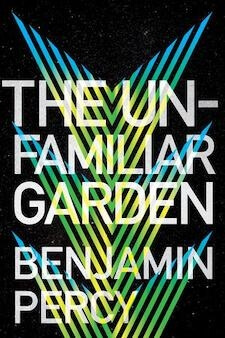Disaster strikes in four new futuristic sci-fi novels
New novels from Noah Hawley, Jessie Greengrass, Sequoia Nagamatsu, and Benjamin Percy paint a bleak picture of the future

From HBO Max’s Station Eleven adaptation to recent novels like Matt Bell’s Appleseed and Joy Williams’ Harrow, depictions of future worlds transformed by pandemics and climate change are very in-vogue right now. This month, four new novels offer different visions of the near future, none of which would be particularly appealing to live through.
Anthem by Noah Hawley (Grand Central)
Noah Hawley’s sixth novel is a mess, and he seems to know it. “First of all, the author would like to apologize for the world he has created. He knows it is ridiculous,” Hawley writes in a three-page intermission halfway through the book. It’s not the only time he breaks the fourth wall to opine on the social and political themes underlying Anthem—a bloated but entrancing thriller set a few years after the COVID-19 pandemic, when a teenage suicide epidemic spreads across the world, often accompanied by the same mysterious symbol: A11.
Like Christopher Nolan’s Tenet, Anthem has a great premise that gets increasingly complex to the point of diminishing returns. Simon Oliver, son of a corrupt pharmaceutical czar and brother of one of the first teens to die by suicide, escapes from a mental health facility and travels across the country to free adolescent girls from the compound of a billionaire sexual predator.
Hawley is the mastermind behind TV’s Fargo and Legion, and the best parts of Anthem are the narrative puzzle boxes and dialogue flourishes that make his television series so distinctive. But after the first 100 pages, Hawley seems to lose interest in Anthem’s original premise, and dilutes the story with dead-end subplots, minor characters, and dialectic passages that feel ripped from an op-ed or personal essay. In the end, the novel is a sometimes beautiful disaster that would probably only ever get published—in this bizarre form, at least—by a writer with Hawley’s standing as a hitmaker.
The High House by Jessie Greengrass (Scribner)
The High House portrays a near-future climate catastrophe the same way M. Night Shyamalan’s Signs depicts an alien invasion: through the eyes of a single family, in and around their rural home. The family in The High House begins with two orphaned siblings in England, teenaged Caro and her toddler half-brother, Pauly, whose parents are killed by a storm off the coast of Florida. Caro’s late stepmom, Francesa, a world-renowned climate activist, prepared a safe house on a hill in Suffolk—a self-sufficient homestead with supplies to help them survive the catastrophic flooding of East Anglia. When they reach this “high house,” Caro and Pauly meet two other survivors who will become their new family: an old man their mother hired to take care of the house and his granddaughter, Sally.
It’s a bleak yet somehow soothing novel about parenting while the world is falling apart, but also about finding magic in the smallest moments, like a toddler’s smile or a bird’s flight. Jessie Greengrass knows how to bring scenes to life with tactile, sensory details, and while the story can be brutal, the prose is gorgeous. The High House isn’t quite as optimistic about the collapse of civilization as a novel like Kimi Eisele’s The Lightest Object In The Universe is, but it has some compelling things to say about individual people finding meaning in their lives, even at the end of the world.
How High We Go In The Dark by Sequoia Nagamatsu (William Morrow)
How High We Go In The Dark is a daring, ambitious, and memorable novel. The book was originally published as short stories over the last decade, and whether or not it works for you will depend on your appetite for a fractured narrative spread across centuries, like an anthology TV series where every episode stars a new cast in a new setting.
It opens with a stunning chapter set in the year 2030, when archaeologists discover the mummified remains of an ancient child in the Arctic thanks to melted permafrost. Her clothes are impossibly complex for 30,000 years ago, she’s wearing seashells from the Mediterranean, and she’s carrying a prehistoric virus that will soon become a world-changing plague. This first story acts as an inciting incident for Sequoia Nagamatsu’s other visions of the future that fill out the rest of the book. Some, like a pediatric euthanasia theme park or a pig that learns to speak English, veer into George Saunders territory, while others call to mind the tech-gone-wrong nightmares of Black Mirror. There isn’t a single boring page in the whole bunch, and the final section is a truly thrilling payoff.
The Unfamiliar Garden by Benjamin Percy (Mariner)
While The Unfamiliar Garden is actually the second novel in Benjamin Percy’s “Comet Cycle,” the books stand alone pretty well. In the first book, 2021’s The Ninth Metal, debris from a comet lands in the small town of Northfall, Minnesota, and the discovery of a revolutionary “omnimetal” leads to a scientific gold rush. The Unfamiliar Garden is set in Seattle five years after the meteors fell, and told through the perspectives of a divorced couple whose daughter vanished in the Olympic National Forest that same night.
Jack Abernathy, a biology professor at the University of Washington, discovers a new species of parasitic fungus that may be related to the comet. Meanwhile his former wife, Nora, a homicide detective, investigates a bizarre series of murders. Both mysteries eventually lead them back to each other and their search for their missing daughter in a devilishly clever way that ramps up the suspense until the very last page. Like The Ninth Metal before it, The Unfamiliar Garden is pulpy, smart, and perfect fodder for a Netflix series. Book three, The Sky Vault, is out August 2i.